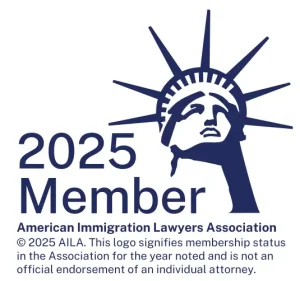When love crosses borders and involves children, immigration law can present significant financial challenges. This scenario plays out frequently in our practice: a U.S. citizen marries someone who has children from a previous relationship. While the marriage may qualify the spouse for lawful permanent residence, the U.S. citizen often lacks sufficient income or assets to sponsor both the spouse and the stepchildren under the Form I-864 Affidavit of Support requirements.
This article examines strategic solutions for overcoming income deficiencies in stepparent immigration cases, focusing on timing, household dynamics, and proper use of joint sponsors.
The Common Challenge: Not Enough Income for Everyone
Under immigration law, when a U.S. citizen petitions for a spouse who has children, separate I-130 petitions must be filed for each family member. More critically, the financial requirements can become overwhelming. The petitioner must demonstrate income at 125% of the Federal Poverty Guidelines for each beneficiary they’re sponsoring.
Real-World Example
Consider this common scenario: A U.S. citizen earning $35,000 annually marries someone with two children. The spouse can adjust status or apply for consular processing, but the children need separate sponsorship. The income requirement jumps significantly when sponsoring multiple people, and many families find themselves caught in this financial gap.
The petitioner’s income alone may be sufficient for one person but falls short when calculated for a larger household size that includes all the stepchildren.
Strategic Solution: The Working LPR Strategy
One effective approach involves strategic timing and the use of the new lawful permanent resident’s earning capacity. Here’s how it works:
Step 1: Priority Processing for the Spouse
If time permits and the children are not at risk of aging out (turning 21), prioritize the spouse’s case first. Whether through adjustment of status or consular processing with an I-601A provisional unlawful presence waiver, getting the spouse to lawful permanent resident status enables them to work legally in the United States.
Step 2: Joint Tax Filing Creates New Income Base
Once the spouse becomes an LPR and begins working, the couple can file joint tax returns. This joint income can then be used to support additional Form I-864 obligations for the stepchildren.
Step 3: Household Member vs. Sponsored Immigrant Distinction
This is where understanding the nuances of Form I-864 becomes crucial. According to 8 CFR 213a.1, the sponsor’s spouse can serve as a joint sponsor using Form I-864A when they are part of the same household but are not themselves the sponsored immigrant.
However, when the LPR spouse is sponsoring their own children (the stepchildren), they typically cannot use Form I-864A because they would be in the same household as the sponsored immigrants (their children). In this scenario, the LPR spouse would need to file a separate Form I-864 as the primary sponsor for their children, using their combined household income with their U.S. citizen spouse.
Critical Timing Considerations
Age-Out Protection
The most important factor in determining whether this strategy is viable is the children’s ages. Children who turn 21 during the process may “age out” and lose their eligibility for immediate relative status. The Child Status Protection Act (CSPA) provides some protection, but careful timing is essential.
Work Authorization Timeline
Consider how quickly the spouse can obtain work authorization:
- Adjustment of Status cases: Work authorization typically available 90-150 days after filing I-485
- Consular Processing cases: Immediate work authorization upon entry as an LPR
Alternative Approaches When Time is Limited
If children are approaching age 21 or immediate action is required, consider these alternatives:
Joint Sponsors
A financially qualified joint sponsor can execute Form I-864 for some or all family members. Joint sponsors must meet the same income requirements and accept the same legal obligations as the primary petitioner.
Asset-Based Qualification
Assets can sometimes substitute for income shortfalls. The required asset value is typically three times the income deficiency (five times for sponsors who are not U.S. citizens).
Legal Authority and Documentation Requirements
The authority for using spousal income in immigration sponsorship comes from several sources:
- INA § 213A(f)(5): Defines household members and their income contribution
- 8 CFR 213a.1(c)(1): Specifies when household member income can be counted
- 8 CFR 213a.2(c)(2): Details requirements for Form I-864A usage
Required Documentation
When implementing the working LPR strategy, ensure proper documentation:
- Joint tax returns demonstrating combined household income
- Employment verification for the LPR spouse
- Proof of household membership showing shared residence
- I-864 or I-864A forms properly executed based on household relationships
Practical Implementation Steps
Before Filing Children’s Petitions
- Calculate total income requirements for all intended beneficiaries
- Assess spouse’s earning potential in their field
- Evaluate timing against children’s ages and CSPA protection
- Consider regional employment markets and realistic salary expectations
During the Process
- Monitor spouse’s work authorization and employment status
- Prepare joint tax filing as soon as eligible
- Maintain detailed financial records for USCIS review
- Track children’s ages and CSPA calculations continuously
When This Strategy May Not Work
This approach has limitations:
- Insufficient time before children age out
- Limited earning capacity of the LPR spouse
- Employment market challenges in the local area
- Other inadmissibility issues requiring additional time and resources
Conclusion
The working LPR strategy offers a viable path for many families facing income deficiencies in stepparent immigration cases. Success depends on careful timing, realistic income projections, and thorough understanding of Form I-864 requirements.
Every family’s situation is unique, and immigration law provides multiple pathways to achieve the same goal. The key is identifying which approach best fits your specific circumstances while minimizing risk to all family members.
Immigration law is complex and constantly evolving. This article provides general information and should not be construed as legal advice for any specific situation. We try to come up with ways to solve problems and help you. This article is an example of that. If you have an immigration problem and need help thinking this through, we can offer a consultation to help you, and implement a plan once you’ve considered your options.

